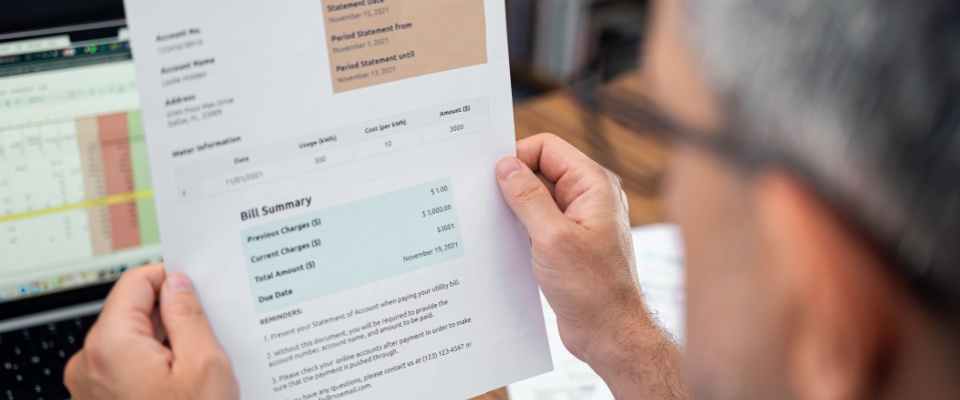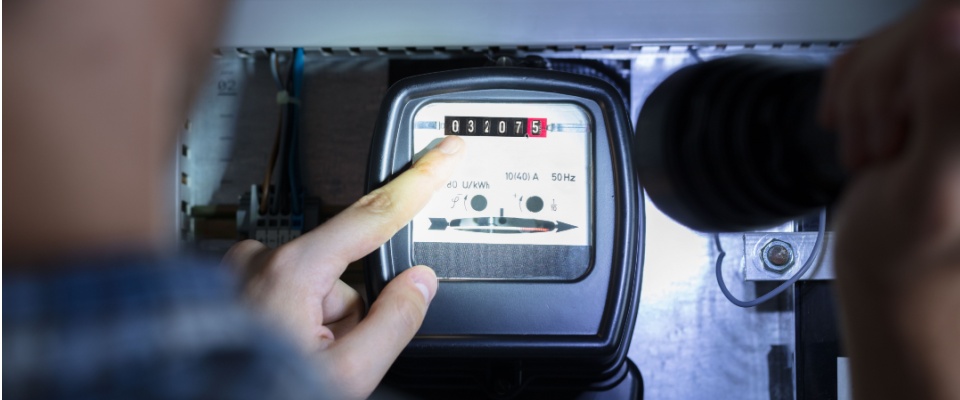Budget vs. standard utility billing: What works better for renters?
Share this article:
Apartment utility bills can make or break your budget. While rent is usually the highest expense, utilities like electricity, water, gas, or internet often fluctuate, catching renters off guard. That’s why understanding the difference between budget and standard utility billing is essential.
Knowing how utilities are billed helps you plan spending, avoid surprises, and identify savings. Some landlords or property managers may give you a choice between billing options, while others stick with one method. Either way, it pays to know which method best fits your lifestyle.
Key takeaways:
- Standard utility billing charges you based on your actual usage each month.
- Budget utility billing averages your utility costs into predictable monthly payments.
- Each system has its pros and cons, especially when looking at predictability versus accuracy.
- Your landlord may decide which billing method applies to your lease, but it’s worth asking before you sign.
What is standard utility billing, and how does it work?
Standard utility billing is the traditional method most renters are familiar with. Each month, you receive a bill based on your actual electricity or water usage. For example, if you use more electricity using your AC in July, your bill will reflect that. If you use less in October, your bill will drop.
In this setup, your local utility company typically reads your meter (or uses a digital meter reading system) and calculates your bill accordingly.
Why a standard utility billing may work for you:
- You pay for exactly what you use, so there’s no risk of overpaying.
- It encourages energy and water conservation, since lower usage means lower bills.
- You can track your consumption patterns and adjust to save money.
When it can be a challenge:
- Bills can fluctuate significantly between the seasons.
- It can make budgeting more difficult since your costs aren’t predictable.
- A surprise high bill can throw off your monthly finances, especially in high-use months.

For renters who prefer control and transparency while not minding small fluctuations, standard billing may offer a fair, usage-based approach.
What is budget utility billing, and how is it calculated?
With budget billing, you won’t pay a different amount every month. Your utility company or landlord estimates your annual utility costs based on past usage or apartment size and divides that total into 12 equal payments.
That means you’ll pay roughly the same amount each month, even when your usage spikes. For instance, if your average annual electric cost is $1,200, your monthly bill will be set at $100 year-round.
At the end of the billing cycle, the company reviews your actual usage. If you’ve used more than estimated, you may owe a small balance. If you’ve used less, you get a credit or refund.
Why budget utility billing may work for you:
- Makes monthly budgeting easier, and your bills more consistent.
- Reduces financial stress during high-usage months.
- Can help you manage utilities on a fixed income or predictable budget.
When it can be a challenge:
- You may overpay if your actual usage drops.
- A “true-up” or year-end adjustment could lead to a surprise bill.
- You may be less motivated to conserve energy since you don’t see immediate changes in your bill.
Budget billing is ideal for renters who value predictability and prefer consistent payment amounts over precise monthly accuracy. It’s also a great fit for first-time renters getting used to managing utility expenses on their own.
Can a landlord require a specific utility billing method?
In most cases, yes, your landlord or property management company can determine how utilities are billed in your apartment or building. The method used often depends on how these are set up for the property.
Here are a couple of examples:
- Individually metered units (where each apartment has its own meter) usually follow standard utility billing. Renters pay their utility company directly for actual usage.
- Master-metered buildings (where one meter serves the whole property) often use ratio utility billing systems (RUBS ) or budget billing. In this case, the landlord divides total costs among residents based on factors like square footage or number of occupants.

Before you sign a lease agreement, it’s smart to ask:
- How are utilities billed — standard, budget, or a ratio system?
- Will I receive the bill directly from the utility company or from management?
- Can I choose a different billing option if I prefer?
What should you keep in mind before moving in?
Before signing your lease, make sure your agreement clearly explains the utility billing options. Ask about average costs, billing methods, and whether utilities are included in the rent or billed separately.
Knowing this upfront prevents confusion later and ensures you’re comparing total costs accurately when choosing between apartments.
Predictable payments or pay-as-you-go?
Understanding budget and standard utility billing methods helps you make smarter decisions about how you manage your budget.
Budget billing offers peace of mind with steady payments, while standard billing gives you transparency and control. Each has trade-offs, but knowing how they work puts you in charge.
Before moving in, take a few minutes to ask your potential landlord about the billing method and consider how it fits your lifestyle. A little bit of preparation can help keep your utility costs manageable, no matter how high the temperature climbs or how cold it gets outside.
Share this article:
Roxana Nica is a senior real estate writer with RentCafe and ResidentShield, bringing over six years of experience in crafting digital content across various consumer industries, including fashion and interior furnishings. She develops resources that address the everyday needs of renters, from smart living tips to navigating residential services. Roxana holds a B.A. in International Relations and an M.A. in Advertising.
The Ready Renter has your back
Tips, news, and research curated for renters, straight to your inbox.




Related posts
Subscribe to
The Ready Renter newsletter







